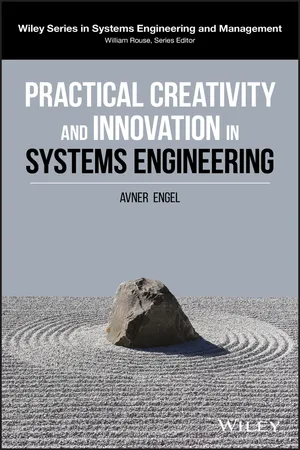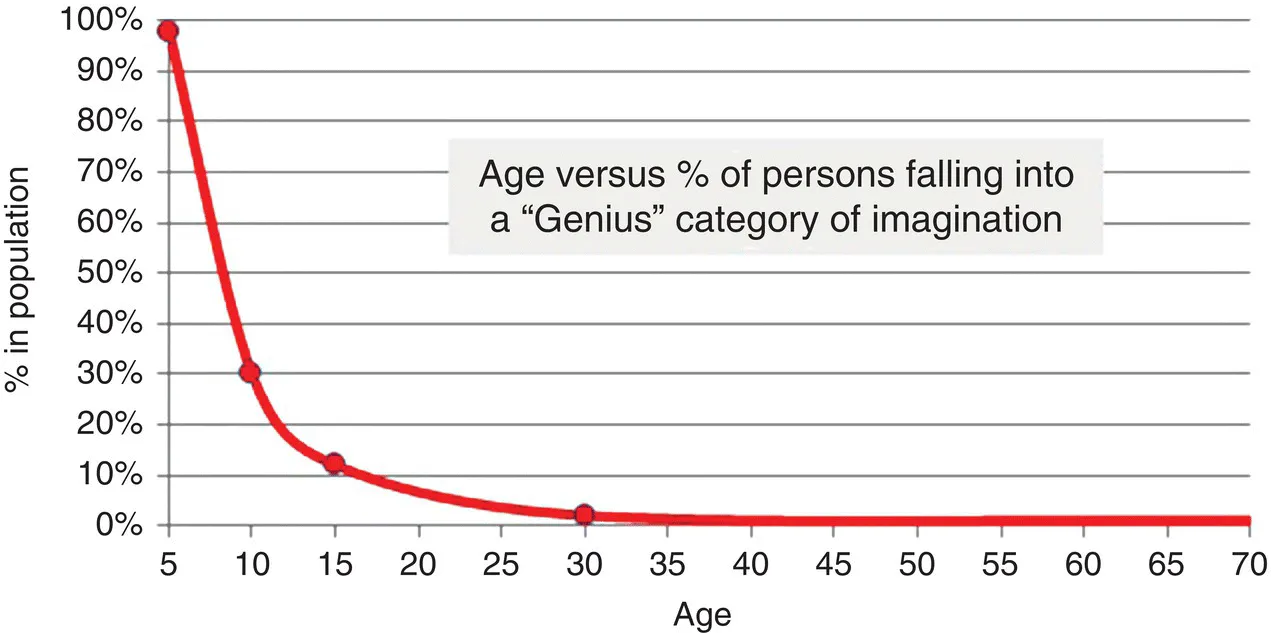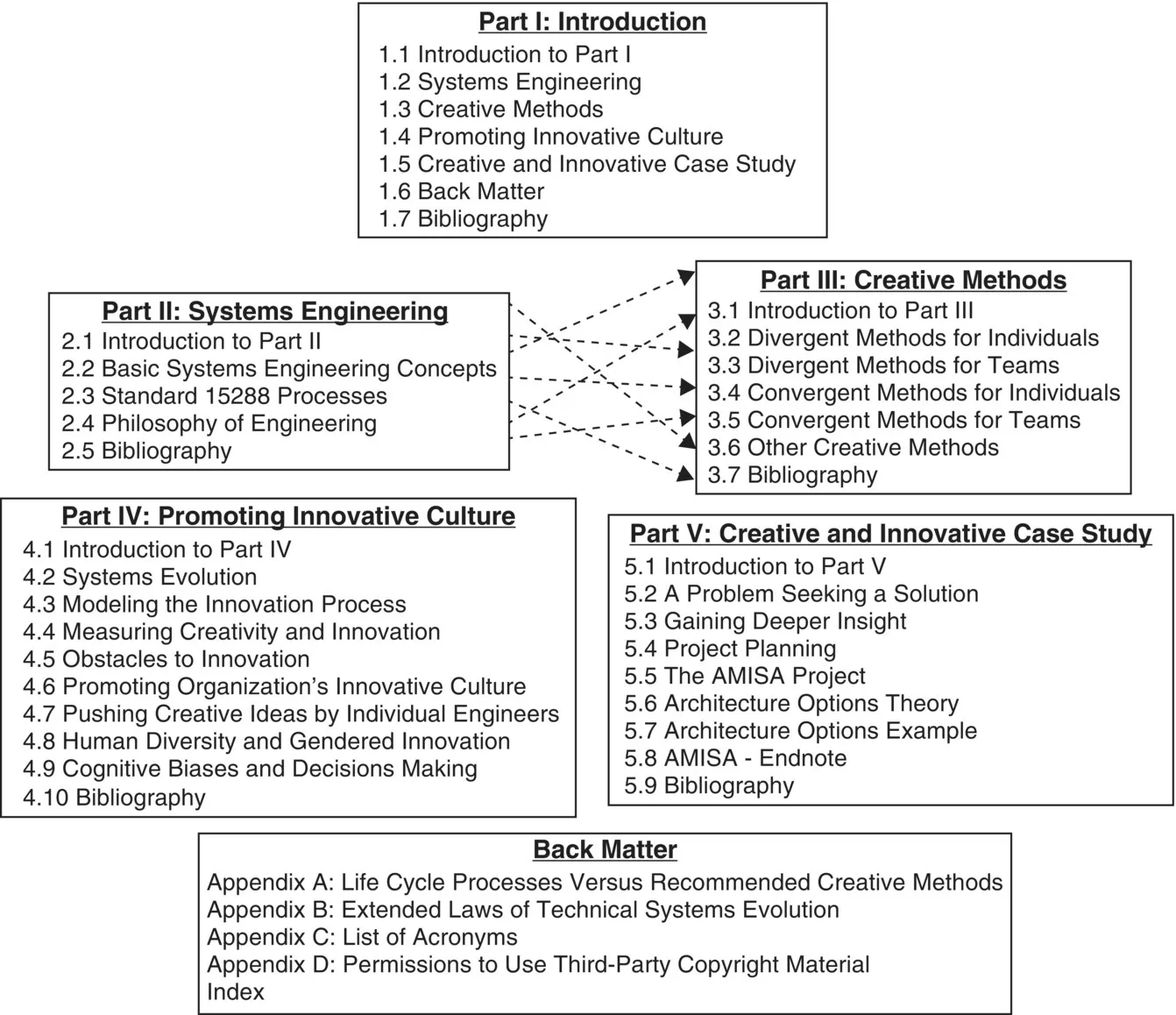
- English
- ePUB (mobile friendly)
- Available on iOS & Android
Practical Creativity and Innovation in Systems Engineering
About This Book
A guide to systems engineering that highlights creativity and innovation in order to foster great ideas and carry them out
Practical Creativity and Innovation in Systems Engineering exposes engineers to a broad set of creative methods they can adopt in their daily practices. In addition, this book guides engineers to become entrepreneurs within traditional engineering companies, promoting creative and innovative culture around them.
The author describes basic systems engineering concepts and includes an abbreviated summary of Standard 15288 systems' life cycle processes. He then provides an extensive collection of practical creative methods which are linked to the various systems' life cycle processes. Next, the author discusses obstacles to innovation and, in particular, how engineers can push creative ideas through layers of reactionary bureaucracy within non-innovative organizations. Finally, the author provides a comprehensive description of an exemplary creative and innovative case study recently completed.
The book is filled with illustrative examples and offers effective guidelines that can enhance individual engineers' creative prowess as well as be used to create an organizational culture where creativity and innovation flourishes. This important book:
- Offers typical systems engineering processes that can be accomplished in creative ways throughout the development and post-development portions of a system's lifetime.
- Includes a large collection of practical creative methods applicable to engineering and other technological domains
- Includes innovation advice needed to transform creative ideas into new products, services, businesses and marketing processes
- Contains references and notes for further reading in every section
Written for systems engineering practitioners, graduate school students and faculty members of systems, electrical, aerospace, mechanical and industrial engineering schools, Practical Creativity and Innovation in Systems Engineering offers a useful guide for creating a culture that promotes innovation.
Frequently asked questions
Information
Part I
Introduction
“One must still have chaos in oneself to be able to give birth to a dancing star.”Friedrich Nietzsche (1844–1900)
1.1 Introduction to Part I


1.2 Systems Engineering
Table of contents
- Cover
- Table of Contents
- Preface
- Acknowledgments
- Part I: Introduction
- Part II: Systems Engineering
- Part III: Creative Methods
- Part IV: Promoting Innovative Culture
- Part V: Creative and Innovative Case Study
- Appendix A: Life Cycle Processes versus Recommended Creative Methods
- Appendix B: Extended Laws of Technical Systems Evolution
- Appendix C: List of Acronyms
- Appendix D: Permissions to Use Third‐Party Copyright Material
- Wiley Series in Systems Engineering and Management
- Index
- End User License Agreement